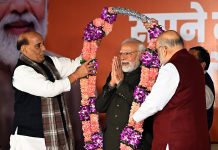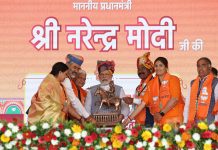 Cow, I guess, was the third word taught to us after Apple and Boy when we were learning English alphabets in our childhood. The first essay we wrote in our life was on this lovely and chaste animal. For ages, the phrase Allah Miyan ki gaaye (God’s cow) has regularly been used among north Indian Muslims to refer to any simple and humble human being. I was born in a district of Uttar Pradesh. When I was three, my parents moved to Delhi. Since then, I have been living in various Muslim localities of the Indian capital. I never saw or ate cow meat. Same is the case with my children, close relatives and friends. Muslims, in general, consider cow slaughtering a taboo as it hurts the feelings of the majority community in the country.
Cow, I guess, was the third word taught to us after Apple and Boy when we were learning English alphabets in our childhood. The first essay we wrote in our life was on this lovely and chaste animal. For ages, the phrase Allah Miyan ki gaaye (God’s cow) has regularly been used among north Indian Muslims to refer to any simple and humble human being. I was born in a district of Uttar Pradesh. When I was three, my parents moved to Delhi. Since then, I have been living in various Muslim localities of the Indian capital. I never saw or ate cow meat. Same is the case with my children, close relatives and friends. Muslims, in general, consider cow slaughtering a taboo as it hurts the feelings of the majority community in the country.
Almost all the leading Islamic seminaries in India, including Darul Uloom Deoband, have always remained opposed to cow-slaughtering as a mark of respect towards the sentiments of the fellow countrymen. The community is specifically reminded to avoid any such act during Eid Al Adha, also known as the “Sacrifice Feast”. This has been the practice for decades, much before the present NDA government came to power at the Centre, or Yogi Adityanath took charge of Uttar Pradesh.Interestingly, Emperor Babur, who laid the foundation of the Mughal dynasty in the Indian subcontinent, had advised his son and successor Humayun in his wasiyat-nama (will) to ban cow-slaughter, steer clear of any kind of religious prejudice and, keep in mind the religious sentiments and customs of the people, and be just to all without exception. This practice, in general, remained in place until the deposition of Bahadur Shah Zafar, who banned the butchery of cows, forbade the eating of beef and authorised for anyone found killing a cow the terrible punishment of being blown from a canon.
Beef, as per the historical records, was a popular food for the Britishers living in India. The first slaughter house in India was built in Calcutta (now Kolkata) in 1760 by Robert Clive, the then Governor of Bengal. It could slaughter 30,000 animals per day. There were 350 slaughter houses in the country by 1910.
All these historical facts are there in black and white. But self-appointed cow protectors are openly threatening, attacking and killing people left and right in the name of saving the animal. The so-called campaign, which garnered fresh limelight with the lynching of Mohammad Akhlaq in Uttar Pradesh after being accused of keeping beef in his house, is rapidly gaining high pitch. Violence against the alleged cow smugglers and killers is on the rise. The death of Pehlu Khan, who was recently dragged out of his vehicle and lynched on the Alwar highway in Rajasthan, is just one of several incidents taking place across the country.
The first Gaurakshini Sabha, or Cow Protection Society, was established in Punjab in 1882. The movement spread rapidly all over North India and to Bengal, Bombay, Madras and other central provinces. Interestingly, the job of the organisation was to rescue wandering cows and reclaim them to groom them in places called gaushalas. Charitable networks, developed all over North India, used to collect rice from individuals, pool the contributions, and re-sell them to fund the gaushalas. The modern gau rakshaks rarely focus on improving the situation of the cows that are seen wandering the streets or eating plastic. Killing cows, which are considered sacred by a large section of the Indian society, is definitely awful. But what about lynching fellow human beings in the name of cow protection? The goat and the lion, according to Hindu mythology, used to drink water side by side at the same pond during Ram Rajya. Making fellow human beings feel safer will go a long way in achieving the goal.











